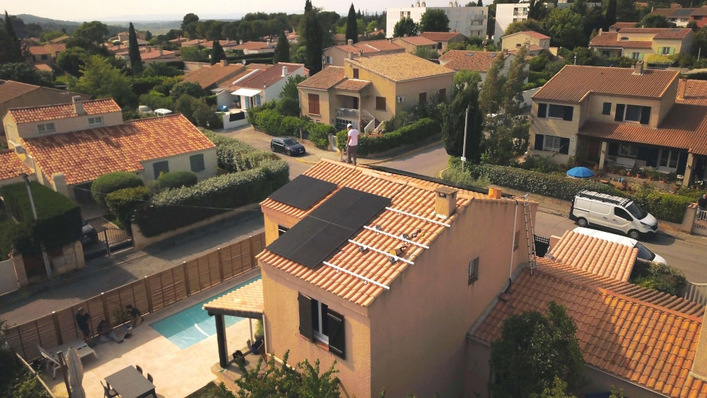A key criterion is the minimum distance, also known as the separation distance. It needs to be great enough to prevent the lightning from striking the solar panels, the frames, the mounting rails or the wiring connecting the solar strings. It should be deflected into the ground via the lightning rods, instead of into the building via the generator’s main cable!
Sometimes the lightning rods or lightning spikes need to be spaced very closely together to fully protect the solar array. Only then is the solar generator covered by the external lightning protection system.
The customer’s decision
On the other hand: A PV installation does not increase the risk of lightning strike as it tends not to jut out that much. But because of the rising occurrence of thunder storms, offering appropriate protection from lightning and overvoltage is definitely called for.
If the customer nevertheless decides not to take advantage of it, then the installing company can at least prove that it was the customer’s decision. Remember: The solar generator is supposed to reliably work and generate clean energy for 20 to 30 years.
The inverter ending up in a burst
The inverter ending up going down in a blaze of glory before that point because it was improperly protected against overvoltage can be quite expensive.
To protect from (external) lightning strikes it is important to deflect the massive amounts of electricity coming from the sky into the ground as quickly and harmlessly as possible. Damage to PV generators first and foremost is costly and a lot of trouble. (HS)
Look at this, too:
Solar advice: Protect your roof-top installation
Stay informed, get our newsletter twice a week: Register here.
Find useful products for solar generation here.
Find useful products for solar energy storage here.







